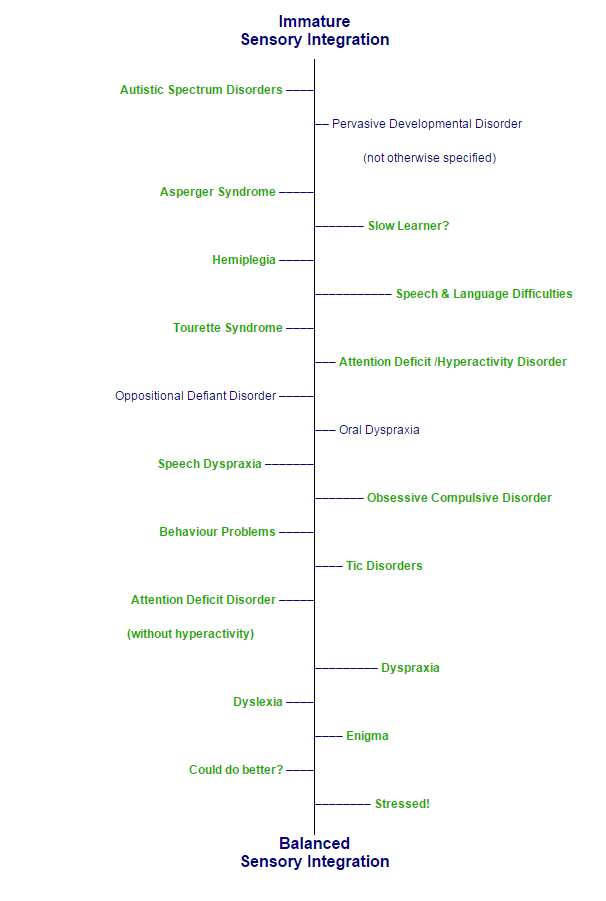
Understanding Your Child
“When parents first realise that their child is experiencing difficulties they usually notice one particular aspect of their behaviour. They may be strangely distant, over-active, late with their speech, clumsy and uncoordinated, have difficulty expressing themselves properly, lack the ability to concentrate, fail to learn to read as expected, have a particular difficulty with maths, behave badly – the list is long.
Parental concerns may lead to them seeking professional advice, at which point a label may be applied to the child’s difficulties. This serves three main purposes: to help to explain the child’s behaviour so that the child can be better supported and understood; to access extra professional help; and to give the child extra time and possibly support in exams.
Labels are applied to a particular cluster of difficulties, and often the parent’s concerns will be part of a syndrome that includes problems they have yet to notice or connect. Dyslexic children may find reading very hard, but they are also likely to have a poor short-term memory. Dyspraxic children are clumsy, but they will also have big problems with visual processing. Both sets of children will probably have difficulty organising themselves.
An explanation of the typical component parts of any syndrome can be very helpful to teachers and parents in supporting the child. However, these syndromes are not separate ‘diseases’, and many children whose difficulties fit into one particular label will also have some that fit into another. Children with more severe difficulties will share the characteristics of a large number of syndromes. Many children with quite a number of problems will not fit neatly into any particular pattern.
At Edutherapy we see the symptoms children display as indicative of dysfunctions in particular aspects of a sensory integration continuum. A number of labels could be applied to the severe end of the continuum, so, for example, an autistic child might share many of the characteristics of speech and language difficulty, dyspraxia, dyslexia and ADHD – only the severe label, autism, would be applied. Most children with mild difficulties will have a profile which does not attract a label. Children can have mild or severe problems with any particular syndrome, so they do not sit at a fixed point on the continuum.
The Sensory Integration Continuum

If you work successfully with that child a little longer, they may lose their former label and fit better into a description of ‘dyslexia’ or ‘dyspraxia’. Ultimately they may lose all their symptoms and no longer stand out as different in any way. In the same way, a child with ADHD or speech and language difficulties might soon present as a child with dyslexia or dyspraxia and ultimately be free of significant difficulties.If you successfully address a number of the sensory integration issues the autistic child displays, as we have been doing for many years at Edutherapy, the child may move along the continuum. They no longer fit the description of autism, but they may fit the ‘Asperger’s’ or ‘Speech and Language Difficulties’ label.
The aim of the Edutherapy programme is to enable children to express their full potential and feel comfortable with themselves. For most children who reach their point of optimal balance in sensory integration this will mean conforming to the norm in terms of learning and behaviour. However, many of them will never conform to the norm because their processing is different. Once they are in balance it is very important for parents and teachers to respect their processing differences because that is what is special about them. They may never feel comfortable if this does not happen, they will not be able to maintain a point of balance and may never be able to make their unique contribution to the world.
This is particularly true of children who display characteristics of classic dyslexia, mild dyspraxia and our Enigma/T-type label. These children operate particularly from the right brain, seeing the whole picture, living in their imagination, sometimes very good communicators, finding new ways to do things and possibly rejecting the current model. They do not readily use left-brained abilities such as ordering, organising and sequencing, they may be very sensitive and some operate in pictures rather than words. These children are the artists, engineers, innovators and entrepreneurs of the future, very good on their own agenda and sometimes very bad at fitting into the narrow constraints of school. For these children it is often not enough to just put them on a programme and hope they fit in. They need active understanding and support.
Your child may already have a label, or you may be tempted to apply one as a result of reading about the different syndromes. Remember that labels stick, but children can change, particularly if their sensory integration difficulties respond well to the programme. If you look at your child as being terminally dyspraxic he may very well balance in line with your expectations. If you look at him as having dyspraxic characteristics at the moment, but capable of overcoming his current difficulties, you can give him the support he needs without holding him back.







